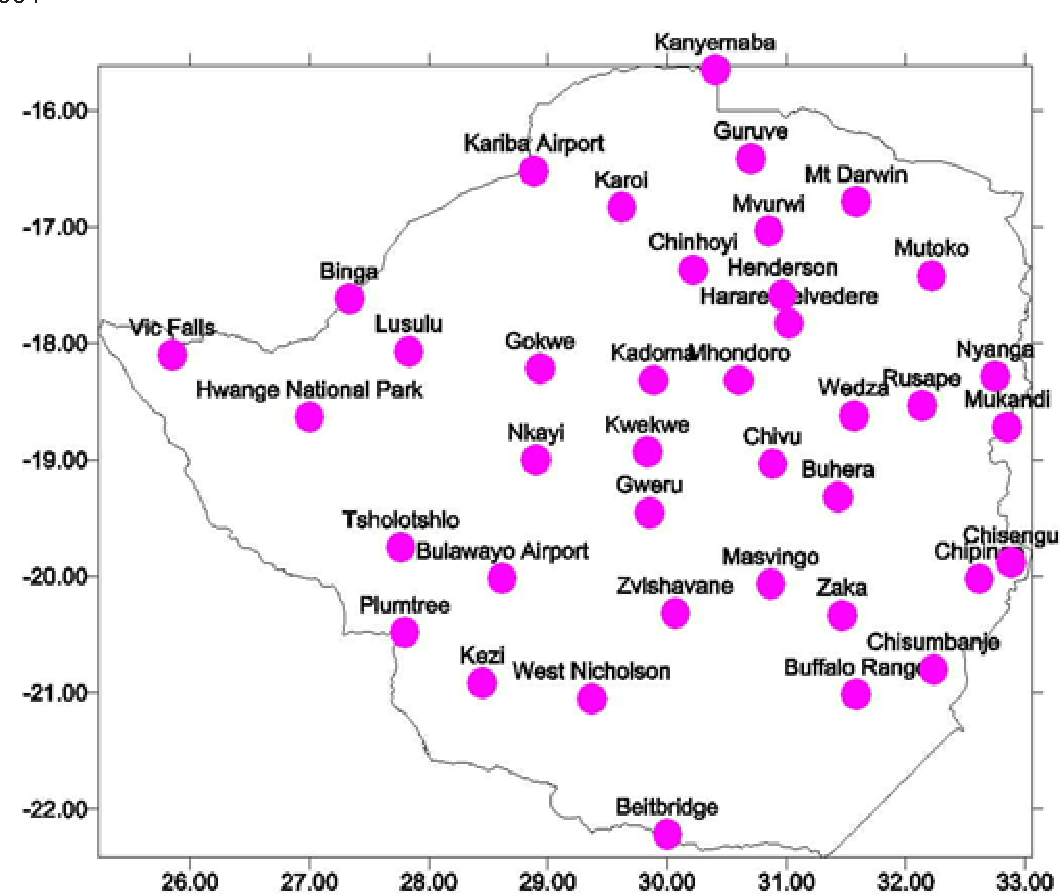Revised agro zones to boost productivity
The reclassification of agro-ecological zones will help transform the country’s agricultural production systems through increased efficiency and better land use management, Higher and Tertiary Education, Innovation, Science and Technology Development Minister Professor Amon Murwira has said.
He told The Herald in an interview that the revised agro-ecological zones that were recently approved by Cabinet, were a key driver of agricultural development, which could promote greater resilience and sustainability of farming practices in the country.
“The template for agricultural planning and development is agro-ecological zones,” he said.
“The reclassification was done by our own scientists. It took them two years to accomplish this. The first agro-ecological zones took 15 years to develop. This proves the power of space and geospatial technology. The 1960 agro-ecological zones were no longer representative of the current climate. So there was now incongruence between agricultural practice and real zones on the ground.
“The new agro-ecological zones will boost agricultural productivity by ensuring a match between current conditions and appropriate crops.”
The drawing up of the revised zones, Prof Murwira said, was one of the major outcomes of the Zimbabwe National Geospatial and Space Agency (zingsa) which was launched in 2018 to advance the country’s interests in geospatial science, earth observation and satellite communication systems.
“When we launched the Zimbabwe National Geospatial and Space Agency, our critics thought we were overambitious. This is the result and we are proud that about 89 officers from the Ministry of Agriculture and a team of between 12 and 20 local scientists worked hard for two years to reclassify the agro-ecological zones.
“Research needs a lot of patience to get meaningful outcomes. With the revised agro-ecological regions we can plan our agricultural activities, change them as the climate changes since we now have it in our GIS computer system. It is linked to the satellite systems.”
Agro-ecological zoning is an approach to delineate the country’s regions mainly on the basis of physical features, soils, rainfall potential, water supply deficit and agricultural practices.
Bio-climatic factors, length of growing period and other aspects are also pertinent to delineating agro-ecological zones.
The old and outdated agro-ecological zones were done between 1945 and 1960, making them irrelevant in determining the country’s agricultural land use patterns which has since been affected by climate change.
“Our scientists found out that agro-ecological regions only exist for a certain climatic period and change over time,” Prof Murwira said.
“The one, which we were using had information for the 1951 to 1982 period. It has outdated information. For instance, it tells us of Region 2 of 1960 and tell me what would happen to crop production as certain parts of this region have now shifted to Region 3.”
The emphasis in the drawing up of the revised agro-ecological zones was on analysis of agro-ecological conditions, soils and cropping patterns directed squarely to the major problems limiting the agricultural growth in the zone.
Experts say the country should promote the mainstreaming of agro-ecology into farming to help provide a strong focus to ensure sustainability and resilience to environmental pressures and climate change.
The agro-ecological zones, Prof Murwira said, should be at the heart of long-term growth and competitiveness of the country’s agricultural sector.
He also said it was also useful to address issues pertaining to the contentious farm size issue and other land management challenges facing the country.
The reclassified agro-ecological zones were also expected to build inter-dependent, inter-related and often inter-linking production systems based on crops, animals and related subsidiary farming activities to enhance resilience, diversity, system efficiency and productivity.
In addition, there were useful in projecting future demand, competitive advantage and scope for transforming the country’s agricultural sector.
The country’s space agency was striving to build technical expertise and institutional capacities in various sectors of the economy including agriculture, minerals mapping and quantification, life sciences, wildlife management and tourism, renewable energy, weather and climate services.
“This initiative is expected to enhance Zimbabwe’s capabilities in global policy discourses on generation, access, use and regulation of the application of space technologies and innovations for sustainable development,” President Mnangagwa said when he launched the agency two years ago.
The present agro-ecological classification of Zimbabwe was done by Vincent and Thomas (1960) using only rainfall as the main factor.
A review was done in 1978 by a researcher only identified as Ivy.
These researchers demarcated Zimbabwe into five natural regions based on the effectiveness of the rainfall.-herald











